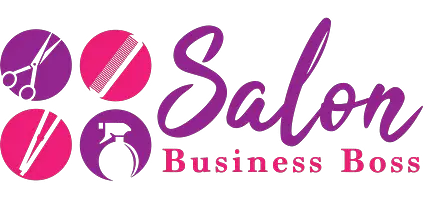When it comes to their hair, most people have a preference as to which salon and stylist will take care of all of their needs. Finding the right stylist may take years of trial and error. However, once you find the stylist who is the right fit for you, nobody can take their place because this is a relationship that has been based on years of trust and reliability. However, there is one fact of which you may not be aware. There are three different levels of hairstylists. So, what are the three levels of hairstylists? Well, let’s find out what they are…
The three most well-known categories of hairstylists are junior, senior, and master stylists. Many salons will base their pricing on the experience of the stylist, with master stylists having years of experience and training. While senior stylists may have more experience than junior stylists, they are typically not as Innovative and creative. Master stylists are often found in leadership and management positions in most salons.
In this article, we will closely examine each of the three levels of hairstylists. I will explain what is required to achieve each level, as well as take a closer look at the role that each level of hairstylist plays in the salon. Finally, we will also evaluate and examine the different levels of pricing that are associated with junior, senior, and master stylists.
What Does a Junior Stylist Do In a Salon?
Being a junior stylist means that you are going to be on the bottom tier of the salon hierarchy because they have the least amount of experience and very little on-the-job training. They will also typically have the smallest customer base of all of the stylists in the salon. According to Pyara Spa and Salon, a junior stylist will usually be well versed in basic cuts and coloring. They have not yet put in the years it will take to gain the knowledge and experience to achieve the rank of senior or master stylist. Their services are usually priced lower than if you see a senior stylist or a master stylist.
Some clients prefer to see a junior stylist because they are looking for a good salon experience at a reasonable price. If you choose to see a junior stylist, keep in mind that they do not have the experience or extensive training that a higher-ranked stylist will have. It’s always best to see a junior stylist if you are looking for a basic cut or coloring. Junior stylists are more than capable of doing this for you and will appreciate the chance to gain more experience. If you need something more complicated, seek the help of a senior stylist or a master stylist.
Learn how to recruit staff for your salon business!
What Does a Senior Stylist Do In a Salon?

After the stylist has spent years in an entry-level junior stylist position, they will have acquired enough training and have honed their skills to become a senior stylist. Part of the Houston Chronicle, senior stylists typically fill the middle tier of a salon hierarchy, but their duties may be different, depending on the salon that employs them. While junior stylists will typically assist higher-level stylists to gain a better knowledge of their craft, senior stylists have a more hands-on approach to learning. At this point, the stylist will have had enough experience that they require little to no supervision.
Due to their extensive training and skill level, senior stylists will charge more for their services than junior stylists. Most of the time, once a stylist achieves the rank of senior stylist, they will see their client base begin to grow as well. However, this is not the end of a senior stylist’s training, as most salons will require them to continue their education and gain many more years of experience if they want to achieve the rank of a master stylist. While some senior stylists may continue to take walk-in clients, most of them I work by appointment only, and generally have their regular customers scheduled for months in advance.
What Does a Master Stylist Do In a Salon?
Master stylists are often the highest-ranking stylists in a salon. Their job duties will generally include training and mentoring junior stylists to help them gain the knowledge and experience to rank up to be master stylists. Aside from continuing their education, master stylists often have the largest client base in the entire Salon, which means they are quite busy. Although their cuts are the most expensive in the salon, master stylists also received positive feedback on their work quite regularly from new and existing clients. Simply put, master stylists are in demand.
Perhaps the main reason that master stylists have such a loyal clientele is that they have learned how to master several different techniques and methods of haircuts through years of experience. There is a reason that getting a cut from a master stylist will cost you more than if you go to a junior or a senior stylist. They have gained more knowledge and have better skills because they have logged years of experience and training to get to where they currently are. You will often see master stylists in positions of authority at their respective salons.
What Is the Pay Scale for Stylists?

The median wage for stylists is currently $15.61 per hour, according to the US Bureau of Labor Statistics. However, the top 10% of stylists, which is generally dominated by master stylists, make $25.68 personal hour or more. Simply put, the more experience and knowledge you gained, combined with the skills you acquire through years of experience, means that you will make more money as you continue to rank up until you achieve the distinction of being a master stylist. When it comes to their hair, people will gladly pay more for a master stylist to make them look their best.
Have you ever gone to a hair salon and wondered why your cut and style were more expensive than the last time you were there? While some people may talk this up to inflation and rising prices, there is more than likely a different reason why you might pay more for the same cut if it is done by a different stylist. You are paying for a master stylist’s significantly higher skill level, coupled with years of training and education. If your regular stylist is a master but is unavailable, and you get your hair done by a junior stylist, you will pay less for their services. But, you may also see a difference in the results. This is why I always advise that you stick with the same stylist.
Conclusion
The next time you find yourself in a salon, remember that there are three levels of stylists that will be available to take care of your needs. Junior stylists are sare capable of doing basic cuts and coloring, as they have not yet had enough experience to move up the salon hierarchy. Senior stylists have had more experience and will have usually had more education than junior stylists, and are capable of doing more complicated cuts, coloring, and styles. However, their prices will be higher than if you see a junior stylist.
Master stylists have had the most experience and education, and are mostly responsible for mentoring junior stylists, and usually hold positions of authority in the salon. They normally have the largest client base, but also charge the most for their services. Now that you know the different levels of stylists that are found in a salon, you can make an educated decision based on what type of cut and style you like, and how much you are willing to pay for that look.
Related Questions

How long does it take to become a senior stylist? Becoming a senior stylist will take years of dedication and education. While there are some regional variations involved, it can take four to five years for a stylist to achieve the rank of a senior stylist. This includes the cosmetology training and necessary licensing courses, coupled with on-the-job training and continuing education courses that will be required by some salons.
What is the average cost to open a hair salon? One of the key factors that will influence how much it will cost to open a hair salon is whether you choose to purchase an existing space or build one from the ground up. If you plan on purchasing an existing Salon, you can’t expect to pay somewhere between $40,000 and $250,000, depending on which Salon you plan on purchasing. On average, it may cost as much as $500,000 if you choose to build a salon from the ground up.
Looking to start your own Salon? Get the documents you need to get organized and funded here.
Please note: This blog post is for educational purposes only and does not constitute legal advice. Please consult a legal expert to address your specific needs.

About the author. Entrepreneur and Salon Business Fan.
Hi! I am Shawn and I am a happy individual who happens to be an entrepreneur. I have owned several types of businesses in my life from a coffee shop to an import and export business to an online review business plus a few more and now I create online salon business resources for those interested in starting new ventures. It’s demanding work but I love it. I do it for those passionate about their business and their goals. That’s why when I meet a salon business owner, I see myself. I know how hard the struggle is to retain clients, find good employees and keep the business growing all while trying to stay competitive.
That’s why I created Salon Business Boss: I want to help salon business owners like you build a thriving business that brings you endless joy and supports your ideal lifestyle.

